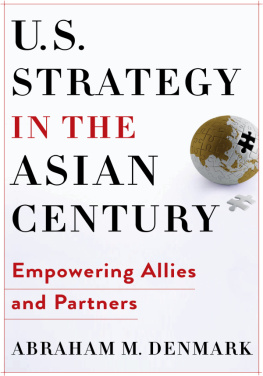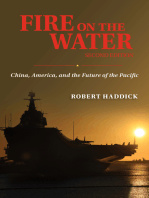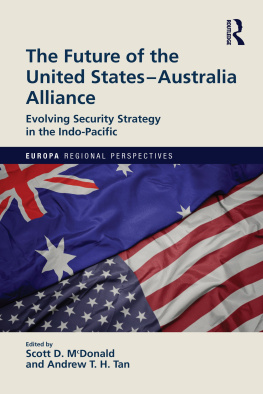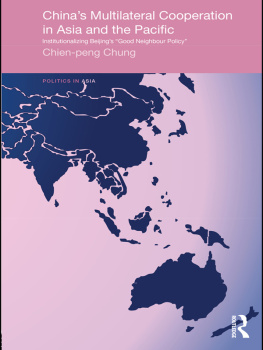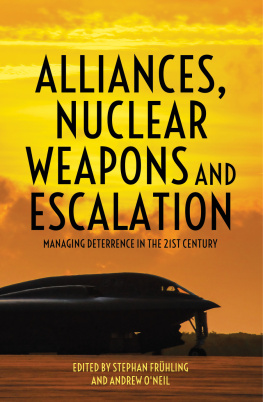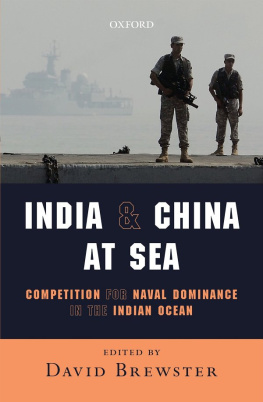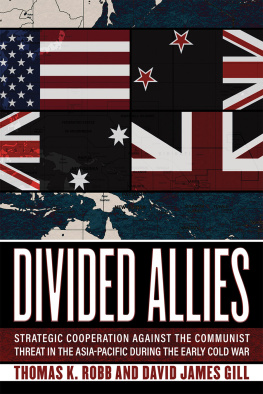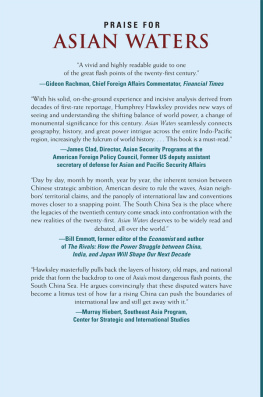Table of Contents
Praise for U.S. Strategy in the Asian Century
As disruptive tailwinds propel Asia and the Indo-Pacific to the center of global politics, Abraham M. Denmarks meticulous research provides a pragmatic rationale and a lucid strategy to recalibrate American engagements in the region with old and new partners. A must-read.
SAMIR SARAN, PRESIDENT OF OBSERVER RESEARCH FOUNDATION, INDIA
This excellent book shows with terrifying plausibility how quickly American power can become hollow leadership unless we return to reliable and creative emboldenment of our allies. Competing successfully with China will require it.
KORI SCHAKE, DIRECTOR OF FOREIGN AND DEFENSE POLICY STUDIES, AMERICAN ENTERPRISE INSTITUTE
At a time when the speed of change in the Asia-Pacific seems to only be accelerating, Denmarks calls for an evolved set of American alliances and partnerships resonate deeply with all who seek a stronger liberal order in the region and beyond.
YOICHI FUNABASHI, CO-FOUNDER AND CHAIRMAN OF THE ASIA PACIFIC INITIATIVE
Wealth and power are moving eastward, toward Asia. One of Washingtons advantages at this historic moment is its powerful and cost-effective network of regional allies and partners. Denmarks timely book contains useful recommendations for both the United States and its friends as they navigate the Asian century.
MICHAEL FULLILOVE, EXECUTIVE DIRECTOR OF THE LOWY INSTITUTE, AUSTRALIA
The Indo-Pacific remains a critical region for American interests, yet multiple emerging challenges in the region will require the United States to develop a strategy matched to the task. U.S. Strategy in the Asian Century compellingly grasps the fundamental nature of USChina competition, the implications of profound geopolitical and technological change, and the critical role allies and partners must play to help shape the regions destiny. Denmarks deep experience and thoughtful analysis show us the way.
ERIC ROSENBACH, CO-DIRECTOR OF THE BELFTER CENTER FOR SCIENCE AND INTERNATIONAL AFFAIRS, HARVARD KENNEDY SCHOOL
Few have examined in detail what kind of policies the United States should adopt toward its treaty allies in Asia and how to do so. U.S. Strategy in the Asian Century does so expertly, filling a big gap in the current policy debate.
M. TAYLOR FRAVEL, MASSACHUSETTS INSTITUTE OF TECHNOLOGY
U.S. STRATEGY IN THE ASIAN CENTURY
WOODROW WILSON CENTER SERIES
WOODROW WILSON CENTER SERIES
The Woodrow Wilson International Center for Scholars was chartered by the US Congress in 1968 as the living memorial to the nations twenty-eighth president. It serves as the countrys key nonpartisan policy forum, tackling global challenges through independent research and open dialogue. Bridging the worlds of academia and public policy, the Centers diverse programmatic activity informs actionable ideas for Congress, the administration, and the broader policy community.
The Woodrow Wilson Center Series shares in the Centers mission by publishing outstanding scholarly and public policy-related books for a global readership. Written by the Centers expert staff and international network of scholars, our books shed light on a wide range of topics, including US foreign and domestic policy, security, the environment, energy, and area studies.
Conclusions or opinions expressed in Center publications and programs are those of the authors and speakers and do not necessarily reflect the views of the Center staff, fellows, trustees, advisory groups, or any individuals or organizations that provide financial support for the Center.
Please visit us online at www.wilsoncenter.org.
William H. Hill, No Place for Russia: European Security Institutions Since 1989
Donald R. Wolfensberger, Changing Cultures in Congress: From Fair Play to Power Plays
Samuel F. Wells Jr., Fearing the Worst: How Korea Transformed the Cold War
U.S. STRATEGY IN THE ASIAN CENTURY
EMPOWERING ALLIES AND PARTNERS
ABRAHAM M. DENMARK
Columbia University Press
New York
Columbia University Press
Publishers Since 1893
New York Chichester, West Sussex
cup.columbia.edu
Copyright 2020 Columbia University Press
All rights reserved
E-ISBN 978-0-231-55227-1
Library of Congress Cataloging-in-Publication Data
Names: Denmark, Abraham, author.
Title: U.S. strategy in the Asian century : empowering allies and partners / Abraham M. Denmark.
Other titles: United States strategy in the Asian century
Description: New York : Columbia University Press, 2020. | Series: Woodrow Wilson Center series | Includes bibliographical references and index.
Identifiers: LCCN 2020009103 (print) | LCCN 2020009104 (ebook) | ISBN 9780231197649 (cloth) | ISBN 9780231197656 (paperback) | ISBN 9780231552271 (ebook)
Subjects: LCSH: Indo-Pacific RegionForeign relationsUnited States. | United StatesForeign relationsIndo-Pacific Region. | GeopoliticsIndo-Pacific Region. | United StatesForeign relationsChina. | ChinaForeign relationsUnited States.
Classification: LCC JZ1480.A55 D46 2020 (print) | LCC JZ1480.A55 (ebook) | DDC 327.7305dc23
LC record available at https://lccn.loc.gov/2020009103
LC ebook record available at https://lccn.loc.gov/2020009104
A Columbia University Press E-book.
CUP would be pleased to hear about your reading experience with this e-book at .
Cover design: Noah Arlow
Cover image: Alamy
CONTENTS
W hen Japanese prime minister Shinzo Abe visited President Obama in April 2015, I was an analyst several years removed from my previous government service and a few months away from joining the Obama administration as deputy assistant secretary of defense for East Asia. I was invited to the White House. for the ceremony welcoming the prime minister on the South Lawn. It was a beautiful spring day in Washington, and I enjoyed the sun next to the South Portico while Abe and Obama reviewed the troops and gave brief remarks to the assembled crowd.
It was a day when the United States and Japan would begin a new chapter in their decades-old alliance and dramatically shape the tour in government upon which I was about to embark. It was also a day of remarkable, if largely unnoticed, historical significance. In 1960, Prime Minister Abes grandfatherPrime Minister Nobusuke Kishihad likewise agreed with President Dwight D. Eisenhower to amend and update the USJapan alliance. Standing in the sun at the White House fifty-five years later, I thought about the history of those two men and marveled at their ability to overcome wartime enmity and adjust their nations policies to the geopolitical realities of the day.
There was a sense that Abe and Obama were building on the accomplishments of their predecessors by updating the defense guidelines that defined the scope of defense cooperation between the two sides. It heralded the beginning of a new era for the alliance, in which Japan would finally begin to contribute more to its own defense and in which US and Japanese forces would be more flexible and better prepared to cooperate on a range of challenges, from maritime security to disaster response, by planning, training, and operating together.

